Water damage mitigation, etc
Hey there,
Months ago, during a renovation to this house, the walls unfortunately caught a lot of moisture. It took a little while to figure out that the walls/insulation got wet, but once I did I turned up the heat in order to try and dehumidify from the inside. The plaster walls then seemed to get dry during the winter–I got moisture readings below 15%.
Fast forward to summer: increased heat/sun, and I began to notice a musty odor from inside. I checked the moisture level of the plaster, and found spots reading 30+%. Uh oh–I thought this had sorted itself out! So I removed the siding to see what lurked beneath, and found some heavy condensation. I waited a couple weeks, hoping the wall would dry itself out, but it still has not–still getting high moisture readings from inside.
Today I went ahead and removed some of the shiplap sheathing to see what I’d find underneath. The insulation is damp, though not sopping, to the touch.
My working (naive) mental model: during the winter (which was especially cold, wet, and brutal in Portland, OR this year), with the heat turned up inside, the plaster was indeed able to dry out enough that the moisture readings went down. But since the wall was so cold on the outside, the insulation basically held onto its moisture. Fast forward to summer, and with the hot sun beating on the south-facing siding here, all that moisture was volatilized and began working its way out, from both sides–into the plaster, and trying to make it out through the building felt. With so much moisture trapped within the cellulose, it didn’t really stand a chance to dry on its own, and will need help drying out.
Agree? Disagree? And what should I do next? Do I need to / should I remove all of the sheathing / insulation, or will just popping off a couple courses of sheathing allow moisture to work its way out of the blown-in cellulose insulation? (I have about another month here of steady sunny days–September gets a bit dicier) Any other advice / notes / warnings I should know about?
Thank you!
GBA Detail Library
A collection of one thousand construction details organized by climate and house part


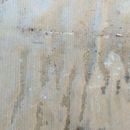
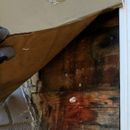
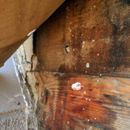
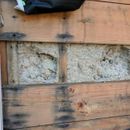
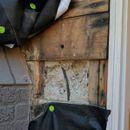







Replies
I think your explanation of what happened is accurate. As far as what to do about it, I'm less sure. What is the interior humidity? You might be able to accelerate drying with dehumidification inside.
I'd dehumidify the interior to 50% and as long as dew points are lower inside, slightly pressurize the building.
Not sure of the interior humidity--it's dry, as the DHP is running in cooling or dehumidification mode at all times. But I'm also not so sure the cool interior is helping things. Making things possibly worse is the fact that one of the interior wet walls has old wallpaper under the paint and over the plaster.
It's slated to hit nearly 110F later this week. I'm hoping that with the single board width of sheathing I removed, that we'll finally have enough drying power to get most of the moisture out of the insulation.
Also not quite sure how to go about pressurizing the building, but either way also not sure what your theory is behind that?
Any further advice would be appreciated, thank you!
Jonathan,
Your analysis makes sense. At this point, you need to maximize the drying rate and monitor the situation.
Contractors who try to dry out buildings that have suffered water damage often turn on the heating system and the air conditioning system simultaneously, with or without the use of dehumidifiers. Using all of this equipment at once exacts an energy penalty, of course, but leads to rapid drying.